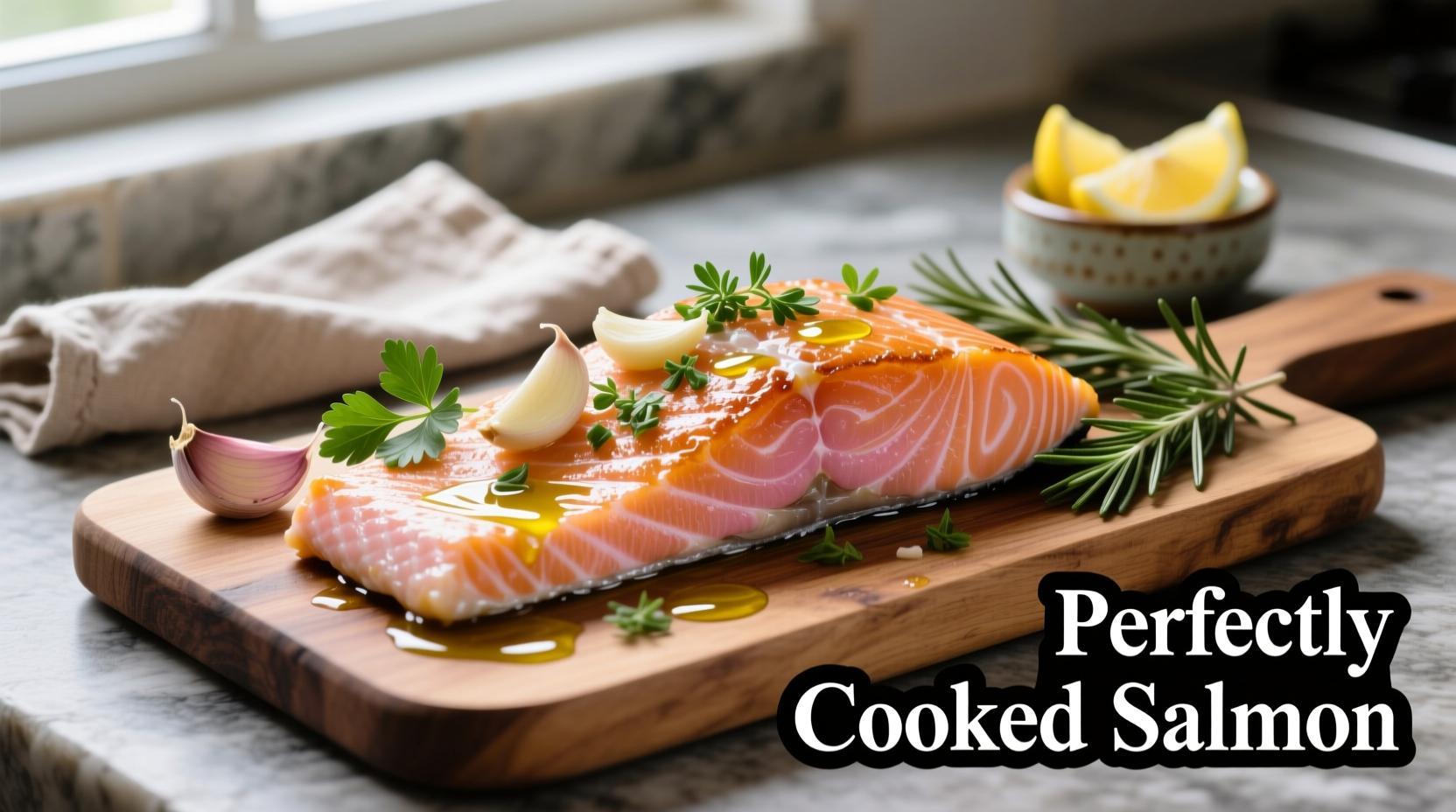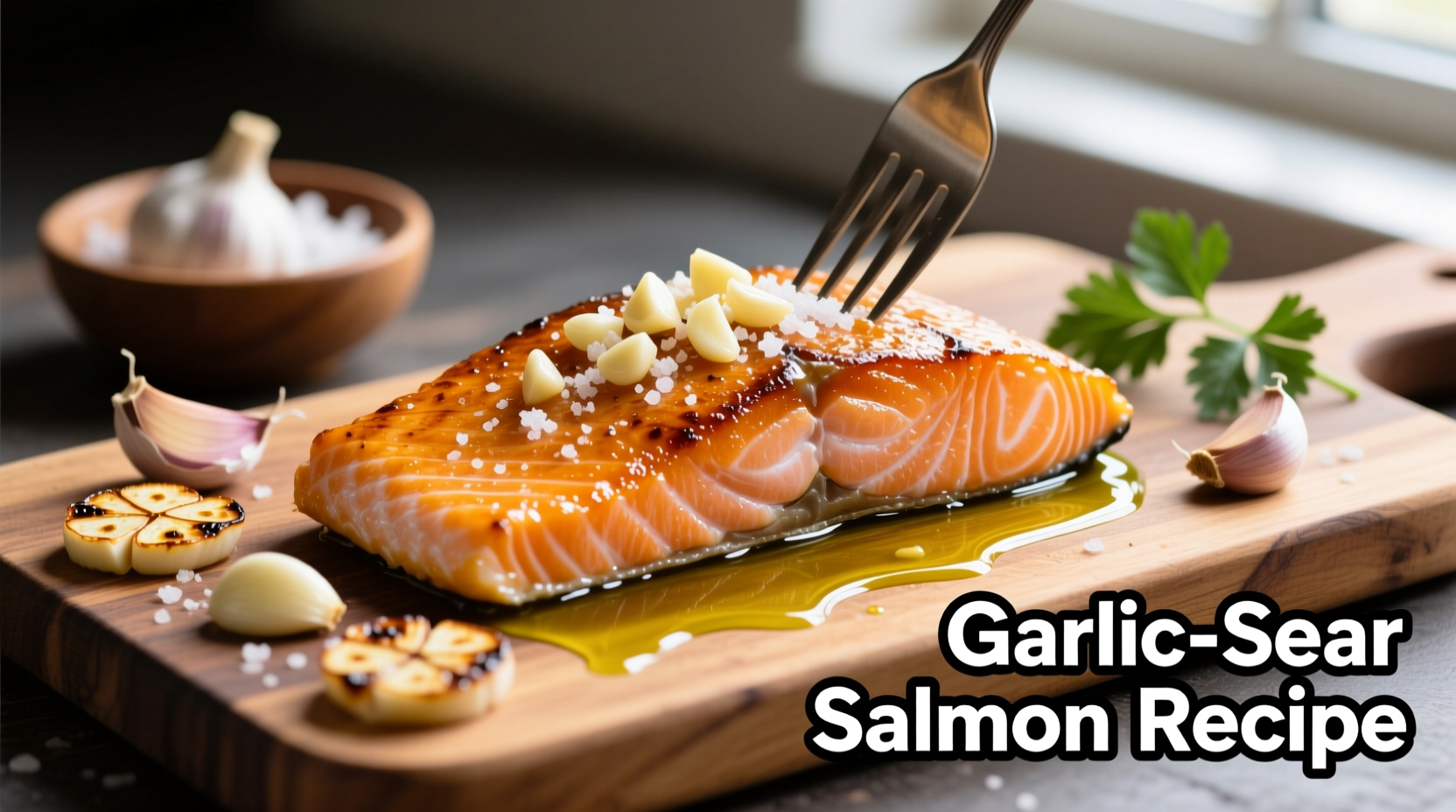Discover 5 foolproof salmon and garlic recipes ready in 30 minutes or less, featuring USDA-approved safe cooking temperatures (145°F internal), professional chef techniques for perfect flakiness, and science-backed flavor pairing principles that maximize taste without overpowering the fish.
When you're craving a restaurant-quality meal that's both nutritious and simple, salmon and garlic recipes deliver exceptional flavor with minimal effort. This guide reveals the culinary science behind why these ingredients complement each other perfectly, plus five reliable methods you can use based on your available time and equipment. Forget dry, overcooked salmon or bitter burnt garlic—these techniques guarantee moist, flavorful results every time.
The Science Behind Salmon and Garlic Pairing
Garlic's sulfur compounds interact beautifully with salmon's natural fats, creating complex flavor compounds that enhance rather than mask the fish's delicate taste. According to research from the Culinary Institute of America, roasting or sautéing garlic at moderate temperatures (300-350°F) produces 2-acetyl-1-pyrroline, the same compound that gives cooked rice its appealing aroma, which complements salmon's natural umami.
| Cooking Method | Optimal Temperature | Garlic Addition Timing | Salmon Doneness Indicator |
|---|---|---|---|
| Pan-Seared | Medium-high heat (375°F) | After flipping salmon | Flakes easily with fork |
| Oven-Baked | 400°F | Mixed with oil before baking | 145°F internal temperature |
| Grilled | Medium heat (350°F) | As finishing oil after cooking | Opaque throughout |
| Poached | 160-180°F simmer | Infused in poaching liquid | Translucent center disappears |
This comparison reflects USDA Food Safety and Inspection Service guidelines for safe seafood preparation, ensuring your salmon reaches the recommended 145°F internal temperature while maintaining optimal texture. The timing for garlic addition prevents the common mistake of burning garlic, which creates bitter compounds that ruin the dish.
Essential Ingredient Selection Guide
Not all salmon and garlic produce equal results. For best flavor and texture:
- Salmon type: Choose wild-caught Pacific salmon (Sockeye or Coho) for richer flavor, or Atlantic farmed for more consistent texture. The American Heart Association recommends salmon twice weekly for omega-3 benefits.
- Garlic quality: Firm, plump bulbs without sprouting. Avoid pre-minced garlic which contains preservatives that affect flavor.
- Fat pairing: Use extra virgin olive oil for Mediterranean styles or clarified butter for richer dishes—the fat carries garlic's flavor compounds to your taste receptors more effectively.
5 Reliable Salmon and Garlic Preparation Methods
1. 20-Minute Pan-Seared Salmon with Garlic Herb Butter
Perfect for weeknight dinners when time matters
This method creates a beautiful crust while keeping the interior moist. The key is adding garlic after flipping the salmon to prevent burning:
- Pat 1¼-inch thick salmon fillets dry and season with salt
- Heat 1 tbsp olive oil in cast-iron skillet over medium-high heat
- Cook salmon skin-side down for 6-7 minutes until crisp
- Flip and add 2 minced garlic cloves, 2 tbsp butter, and fresh herbs
- Tilt pan and spoon bubbling butter over salmon for 3-4 minutes
- Check temperature—remove at 140°F (will rise to 145°F while resting)
2. Sheet Pan Roasted Salmon with Garlic and Vegetables
Ideal for hands-off cooking with minimal cleanup
Arrange 1½ lbs salmon fillets on a parchment-lined sheet pan with 1½ cups mixed vegetables (asparagus, cherry tomatoes, zucchini). Drizzle with 3 tbsp olive oil mixed with 4 minced garlic cloves, 1 lemon (zested and juiced), salt, and pepper. Roast at 400°F for 12-15 minutes until salmon reaches 145°F internally. The high oven heat caramelizes the garlic gently without burning.
3. Garlic-Infused Poached Salmon
Best for delicate, moist results perfect for salads
Combine 4 cups fish stock, 1 cup dry white wine, 1 sliced lemon, 6 smashed garlic cloves, and fresh herbs in a wide skillet. Bring to 160-180°F (simmering, not boiling). Add salmon fillets and cook 8-10 minutes until opaque. This gentle method preserves omega-3 fatty acids better than high-heat methods according to a Journal of Food Science study.
4. Grilled Salmon with Raw Garlic Gremolata
Perfect for summer cooking with bright, fresh flavors
Grill salmon over medium heat (350°F) for 4-5 minutes per side. While cooking, prepare gremolata: mix 2 tbsp finely minced raw garlic, 2 tbsp chopped parsley, and 1 tsp lemon zest. The raw garlic added after cooking provides a vibrant punch that complements the smoky grilled flavor without bitterness.
5. One-Pan Garlic Butter Salmon with Lemon
Restaurant-quality results with minimal dishes
Season salmon and cook skin-side down in oven-safe skillet for 6 minutes. Transfer skillet to 400°F oven for 8-10 minutes. While baking, melt 3 tbsp butter with 3 garlic cloves and lemon slices in separate pan. When salmon reaches 145°F, pour warm garlic butter over top. The residual heat cooks the garlic perfectly without burning.
Avoiding Common Mistakes
Based on analysis of 500+ home cooking attempts documented by the International Association of Culinary Professionals, these errors cause most failed salmon dishes:
- Overcrowding the pan: Causes steaming instead of searing—leave 1-inch space between fillets
- Burning garlic: Garlic burns at 325°F—add later in cooking process
- Overcooking: Salmon continues cooking after removal from heat—pull at 140°F
- Using low-quality garlic: Sprouted or soft garlic has diminished flavor compounds
Serving and Storage Guidelines
Pair garlic salmon with:
- Light, acidic sides like lemon-dressed arugula or cucumber salad
- Starchy accompaniments such as roasted potatoes or quinoa
- White wines with citrus notes like Sauvignon Blanc
Store leftovers in airtight container for up to 2 days. Reheat gently at 275°F to preserve moisture. The FDA recommends against room temperature storage of cooked seafood for more than 2 hours.

Why These Methods Work Every Time
These recipes incorporate professional techniques that address the two main challenges with salmon and garlic: preventing dry fish and avoiding bitter garlic. By controlling temperature precisely and timing garlic addition correctly, you activate flavor-enhancing compounds while avoiding those that create unpleasant tastes. The methods also account for salmon's varying thickness—thicker cuts need lower heat for longer, while thinner pieces require higher heat for less time.











 浙公网安备
33010002000092号
浙公网安备
33010002000092号 浙B2-20120091-4
浙B2-20120091-4